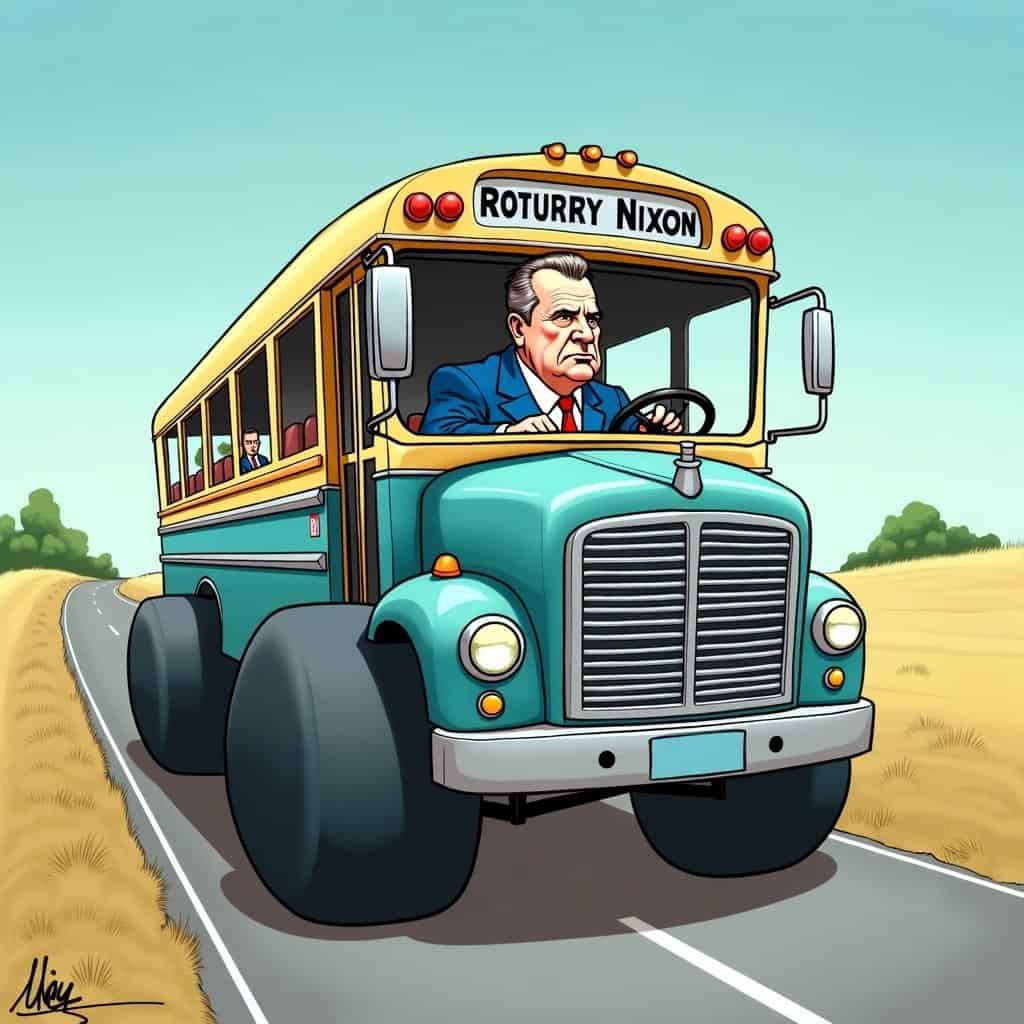Ah, the 1960s and 70s—an era where everything was a tad more colorful, and politicians were as groovy as the disco balls they boogied under. Amidst the chaos of bell-bottoms and flower power, Richard Nixon stomped his way through the political scene with a plan for mass transportation that was as bold as it was conservatively calculated. Let’s talk about the Urban Mass Transportation Act of 1970—because who doesn’t want to discuss mass transit when you could be talking free markets?
Nixon, though often overshadowed by those pesky Watergate tapes, had visions of buses and trains soaring across America like bald eagles over amber waves of grain. The Urban Mass Transportation Act wasn’t just about getting folks from point A to B in those traffic-snarled cities. No, it was about economic efficiency—a principle deeply rooted in conservative values.
You might think, what’s more liberally inviting than public transport subsidies, right? Well, hold onto your star-spangled caps, because Nixon managed to pull this off by making urban mass transit sound not only sensible but a beacon of libertarian efficiency. Here’s the kicker—he rallied support for federal funding to help local governments invest in public transit as a way to reduce gas-guzzling throughways. Conservation through conservative principles, if you will.
Funding and Impact
The act provided roughly $3.1 billion for mass transit systems, which, even adjusted for inflation, is no small sum. However, here’s where Nixon’s Republican charm took the wheel—it wasn’t just about throwing money at the problem. It was about fostering self-reliance. Let’s be real: Americans might love their car culture, but traffic at rush hour looks a lot like socialism: nobody moving an inch, patience running thin, and no one’s getting wherever they need to be.
Urban Mass Transportation Act Funding Breakdown
| Category | Amount (in millions) |
|---|---|
| Bus Systems | $1,200 |
| Rail Systems | $1,500 |
| Research and Development | $300 |
| Administrative Costs | $100 |
Nixon understood that, before this act, bus companies were closing faster than a bargain sale on the last day of Christmas shopping. It wasn’t sustainable—not for a booming urban core, and certainly not for the wallet. The administrative whiz in him was looking for solutions that minimized federal control yet maximized American innovation. A classic conservative balancing act!
Geopolitical Context
Here’s another twist—our geopolitical stage was set during a time when energy independence became a hot topic, so cutting down on fuel reliance caught the public’s attention toward mass transit benefits. Endearing Americans with a mix of patriotism and practical thinking—now that’s a skill worth tipping one’s hat to.
This legislative move wasn’t just a shuttle service between Nixon’s hard-nosed economic policies and the growing demand for functional urban infrastructure. It was an Eisenhower-level highway-like investment but for your everyday commuter. With initiatives like this, Nixon showed the ability to plant conservative footprints on projects typically associated with liberal agendas.
Conclusion
In closing, the Urban Mass Transportation Act chugs down the conservatively paved road with gas-saving solutions, relying on sturdy American innovation, while cleverly using federal horsepower to boost local endeavors. So, the next time you’re seated on a subway anywhere from Los Angeles to New York—with an overhead announcement advising a ‘slight delay’—remember this quaint balance stemmed from a President who ingeniously turned bootstrapping into the very infrastructure of American vigor. And that’s something worth doing the electric slide down Main Street for.
Americans thrive when personal freedom meets innovative efficiency, and Nixon’s Urban Mass Transportation Act was a shining example of this—besides, all roads, even those congested with subway cars and bioshuttle buses, lead to liberty.






